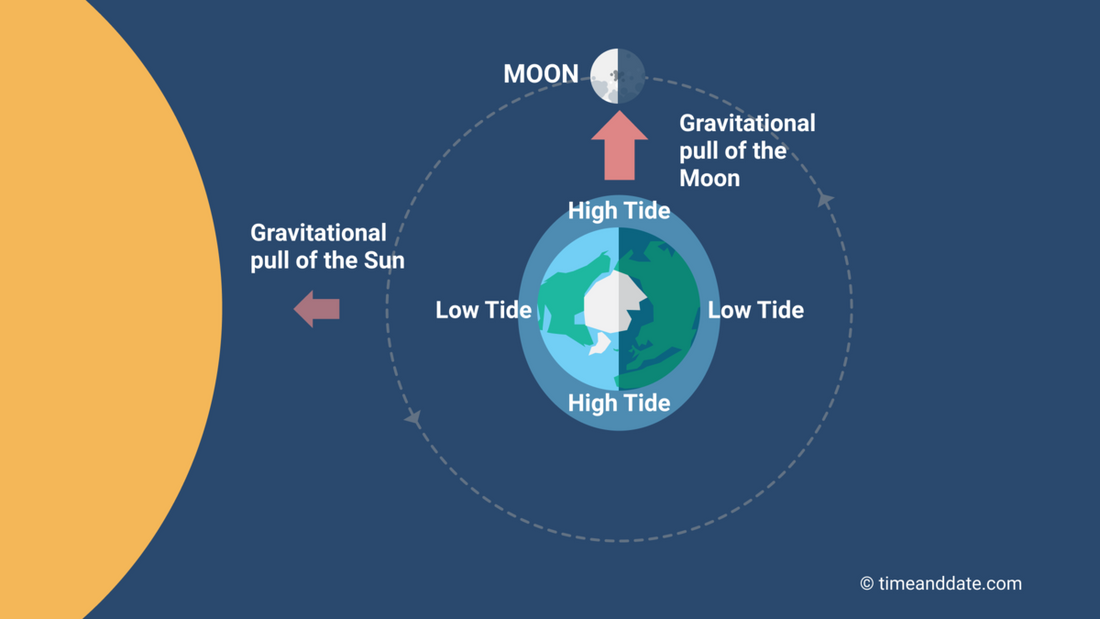
Why Does the Moon’s Gravity Pull the Ocean but Nothing Else?
Share
Have you ever wondered why the moon's gravitational pull affects the tides in the ocean, but not solid objects on Earth's surface? The answer lies in the difference between the way that gravity affects objects of different sizes and shapes.
Gravity is a fundamental force of nature that causes all objects with mass to be attracted to each other. The strength of the gravitational force between two objects depends on their masses and the distance between them. The greater the mass of an object, the stronger its gravitational pull. Similarly, the closer two objects are to each other, the stronger the gravitational force between them.

The moon is much less massive than Earth, but it is still large enough to have a significant gravitational pull. This pull is what causes the tides in the oceans. The moon's gravity pulls on the water in the ocean, causing it to bulge slightly toward the moon. This bulge creates a high tide. On the opposite side of the Earth, there is another bulge caused by the moon's gravity, creating a second high tide. The areas between the two bulges experience low tides.
But why doesn't the moon's gravitational pull affect solid objects on Earth's surface in the same way? The answer lies in the fact that solid objects are much more rigid than water. When the moon's gravity pulls on a solid object, it creates a very small deformation in the object. This deformation is so small that it is not noticeable to the human eye.
In contrast, water is much more fluid than solid objects. When the moon's gravity pulls on the water in the ocean, it creates a much larger deformation in the water. This deformation results in the bulges that create the tides.
The principle of gravity affecting objects differently based on their size and shape is evident in several natural phenomena. Here are a few more examples:
-
Black holes: A black hole is an object with a gravitational pull so strong that nothing, not even light, can escape it. Black holes are formed when a massive star collapses under its own gravity. The gravitational pull of a black hole is so strong because all of its mass is concentrated into a single point, called the singularity. The closer an object gets to the singularity, the stronger the gravitational pull becomes.
-
Planetary rings: Some planets in our solar system have rings made of rock and ice particles. These rings are held in place by the planet's gravity, which pulls the particles toward the planet. The larger particles in the rings are closer to the planet, while the smaller particles are farther away. This is because the larger particles are more affected by the planet's gravity due to their larger mass.
-
Earth's atmosphere: The Earth's atmosphere is held in place by gravity. The atmosphere extends about 6,200 miles (10,000 km) above the Earth's surface, but it becomes less dense the higher you go. This is because the gravitational pull of the Earth decreases the farther away you get from its surface. The less dense atmosphere at higher altitudes means that there is less air pressure, which can make it difficult for planes to fly or for people to breathe.
-
Solar system dynamics: The way that planets and other objects move within our solar system is also affected by gravity. Each object is affected by the gravitational pull of all the other objects in the solar system. This means that the movement of one object can affect the movement of another object. For example, the gravitational pull of Jupiter affects the orbits of other planets in the solar system.
In all of these examples, the gravitational pull of objects is affected by their size and shape, as well as the distance between them. Understanding how gravity works and how it affects different objects is important in many fields, including physics, astronomy, and engineering.
In summary, the moon's gravitational pull affects the tides in the ocean because water is more fluid and easier to deform than solid objects. While the moon's gravity does pull on solid objects, the deformation it creates is so small that it is not noticeable. Understanding the way that gravity affects objects of different sizes and shapes is an important part of understanding the physics of our world.





5 comments
The earth’s atmosphere is 10.000km?? That is simply not true … as far as I know it’s about 2000km … while 100km (or 62miles) is the treshold where you say space begins … soooo?
A small doubt. When moon’s gravity pull affects and attracts based on the mass, then our forest trees top leaves must be errect vertical during moon light days. That is not happening. Forest also massive compared to other water bodies. Then.!?
I do not understand your examples
I am going to share it with others as well.
Wish you all the bests.
Loved reading the write up ♥️